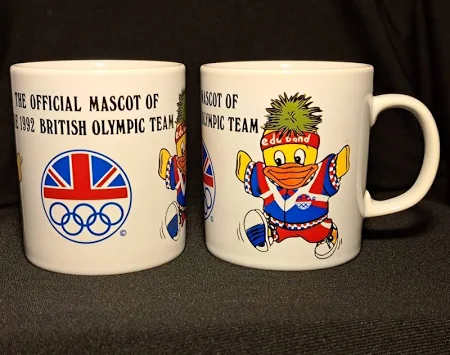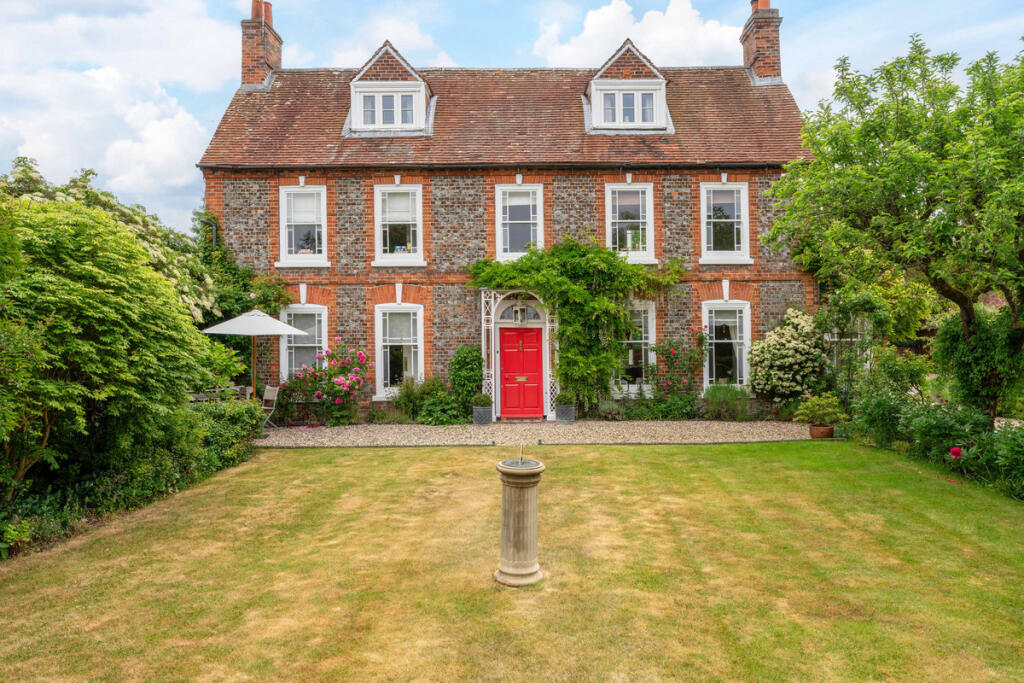
The Riverside House, Coach House & attached walls were originally listed on 18th July 1963 with an amendment on 14th May 1986
It is a Grade II listed, early to mid-18th century house, of flared brick with red brick dressings: clunch rubble with brick dressings, old plain tile roof with brick gable stacks. It has a central-stair plan with rear wing and is 2 storeys plus attics. The symmetrical 5 window front in header bond has a storey band. Windows have mid-19th century sashes with margin lights and the ground-floor sills have been lowered. Central 6 panel door has deep wedge lintel pierced with a fanlight and is set in a Chinese-trellis open porch. There are two, 3-light dormers to the attic level. Gable walls, rear and rear wing are in stone and have stepped brick plinths.
The high brick wall, in Flemish bond, runs stepping down from the left side of the house to the road and returns to the entrance gate.
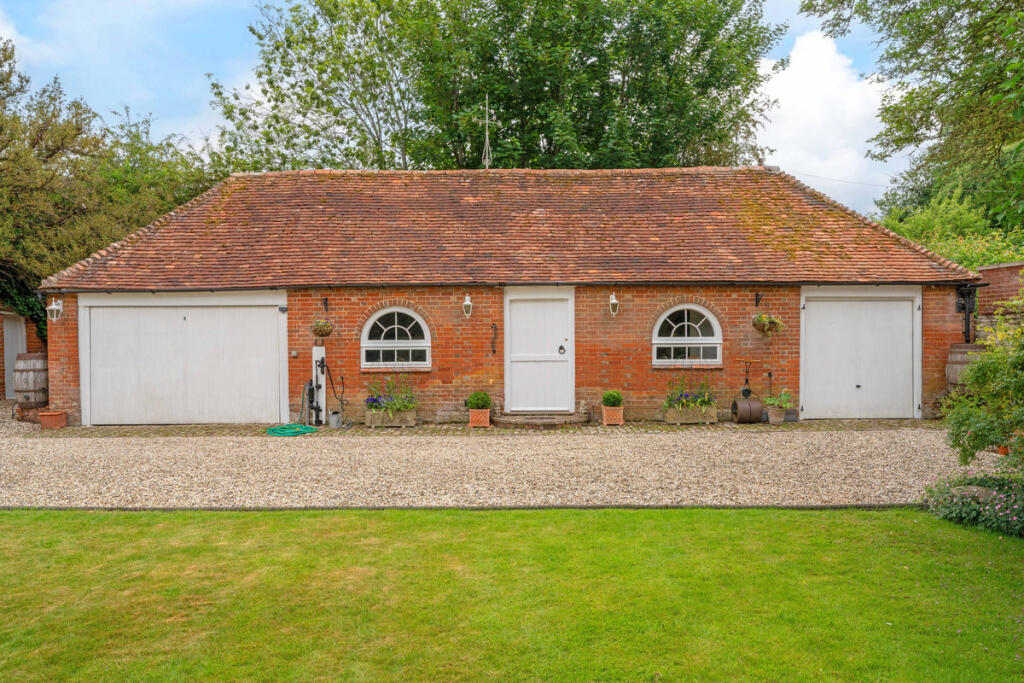
The Coach House is a mid to late 18th century former stables and coach house. Built of brick in Flemish Bond with an old plain-tile hipped roof and is a single storey building. The front has central stable door between 2 lunettes, a large doorway to extreme left and a smaller doorway to extreme right, both with double doors. Included for group value.
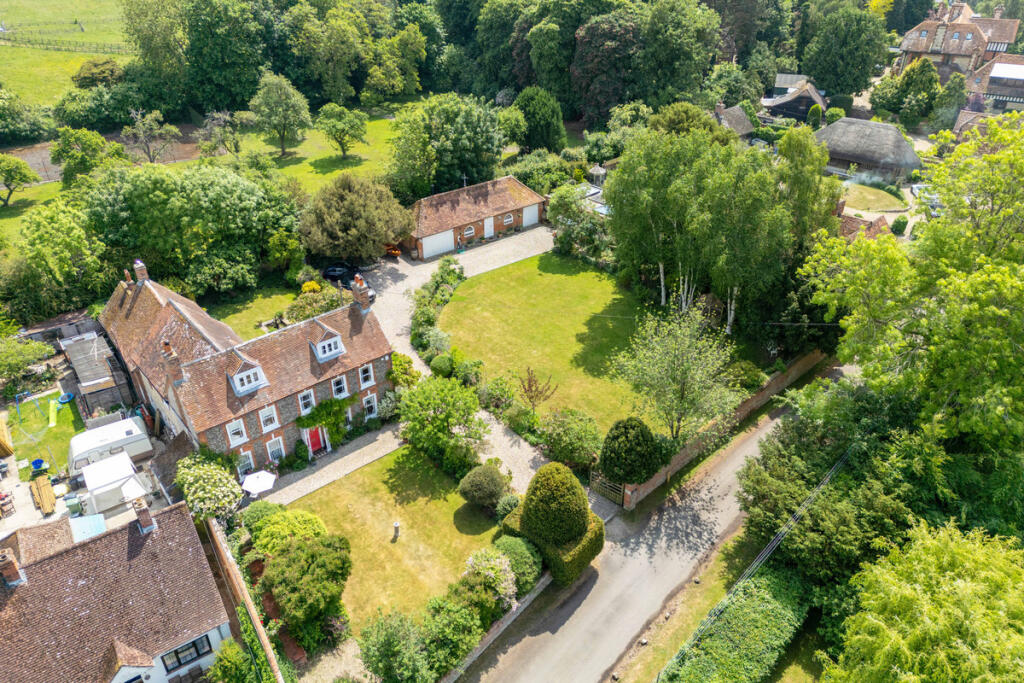
Riverside from the Air
A Sun Alliance insurance mark is still visible and dates from 1760
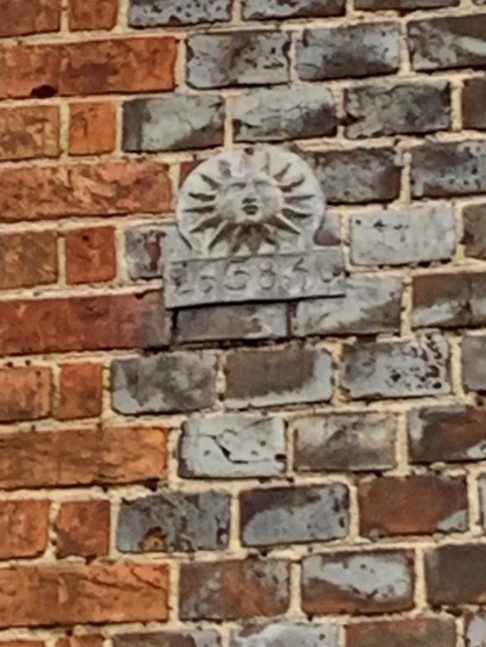
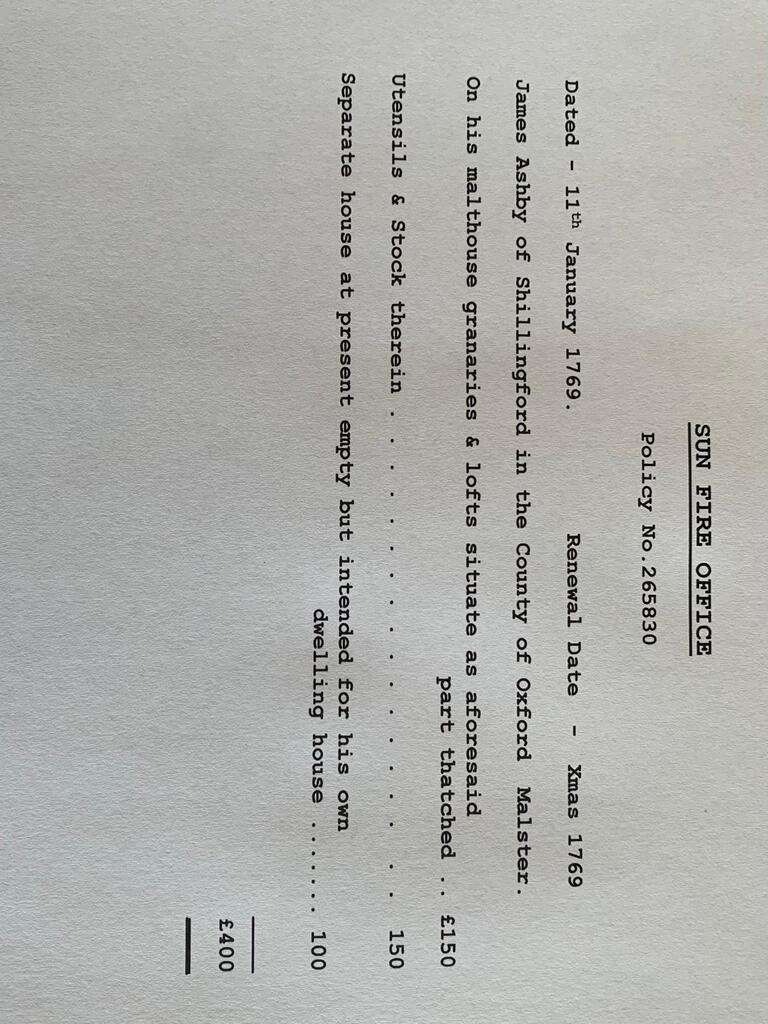
Sun Alliance Insurance Mark & transcription of the details of the policy.
For more information about the history of Sun Alliance Insurance marks visit
https://www.rsainsurance.co.uk/about/our-history/how-rsa-started/
Anthony Mee, the current owner of the property was able to provide a list of residents dating back to 1760
1760 – James Ashby, a maltster and a Quaker who, it is believed, added the front of the house.
He married Mary Tripp and together they had nine children. James died in December 1796 and is buried in the Quaker Burial Ground in Warborough.
1796 – John Ashby was the brother of James Ashby above and title passed to him until James’ son, also James, became of age being only 11 when his father died.
1809 – James Ashby. James was born in Ewelme, where he died in 1848 and there is no evidence to suggest that he ever lived at Riverside.
1844 – William Gilkes, a Corn Dealer and a Quaker who married Martha Saunders, William died in 1875
1876 – Henry Hewett, not listed on the 1881 or 1891 census as living in the house.
1896 – William Greet then purchased the property but again there is nothing to suggest that he lived there as his address at the time was Ferry House. The 1903 Kelly’s Directory shows Capt. Thomas Young Greet at Riverside. Thomas married the widow of Frederick Mortimer, tailor to the Prince of Wales and the man who built Shillingford Court.
1907 – Alexander Mitchell MD and his wife Ellen then lived at the house, until Alexander dies in 1913. Ellen moved away from Shillingford and a Blanche Digby resided there from 1920 until it was sold following Ellen’s death in 1925. Alexander & Ellen are both buried in St Laurence Churchyard.
1923 – Walter Deakin, nothing to identify Walter.
1924 – John William & Maud Watling, John was a retired Master Mariner, his wife Maud died in 1938 and he lived at Riverside until his death in 1954.
1954 – H.M. Paterson, a Herbert McGregor Paterson died in Swan Cottage in 1979. Herbert was a Brigadier in the Army and was awarded a CBE in 1954.
1962 – Derek G.H. Wright. Known as Jake, Wright worked for Brooke Bond. He left Brooke Bond to join the war effort and served with distinction in naval actions against German coastal shipping. A decorated naval officer who served on Motor Torpedo Boats, earning a Distinguished Service Cross (DSC) with two bars. He returned to his post-war career at Brooke Bond, becoming a senior director in the company. He continued to advance in the tea trade and played a role in improving the quality of tea preparation. His life is documented in
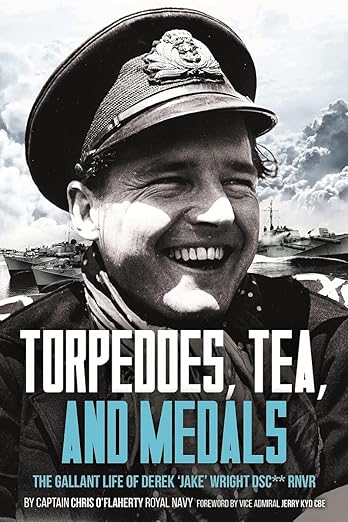
1976 – T.W. Hart
1988 – Mr & Mrs M Harrison
1995 – Malcolm & Lesley Munro Faure – Lesley recalls that the Harrison’s thought there was a ghost since there were lots of unexplained ‘tinkling noises’ but it turned out that the small cellar had flooded and the wine bottles were floating about! They tanked the cellar to prevent this happening in the future.
Lesley also remembers that when they moved into Riverside there was a famous ‘resident’ in the Coach House. It seems that the Harrison’s were heavily involved in merchandising the 1992 GB Olympic mascot and it was full of Edd the Duck memorabilia.

